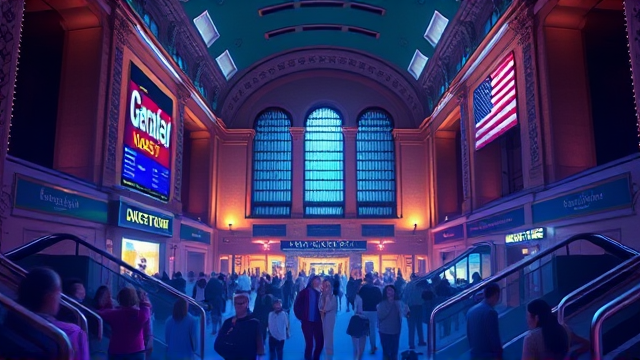Humans of New York Photo Show at Grand Central
For fifteen years, Brandon Stanton has been engaged in the quiet, profound work of seeing people, truly seeing them, a practice that feels almost radical in the ceaseless motion of New York City. His project, 'Humans of New York,' began as a simple photographic census, a map of faces, but it has evolved into something far greater: a vast, collective diary of the human spirit, a testament to the stories that walk among us, unnoticed, every single day.The decision to bring ten thousand of these portraits to Grand Central Terminal is a stroke of genius, a perfect marriage of subject and space. This is not merely an exhibition; it is a homecoming.Grand Central is not a sterile gallery but the city's living room, a cathedral of comings and goings where millions have had their own private moments of joy, grief, anticipation, and exhaustion. To place these intimate, frozen moments of vulnerability and strength within that chaotic, majestic flow is to create a powerful dialogue between the individual and the metropolis, between the singular narrative and the collective hum.One can imagine a commuter, rushing headlong for the 5:48 to Scarsdale, stopping dead in their tracks, caught by the eyes of a stranger from Queens, a shared, unspoken understanding passing between them. This is the magic of Stanton's work—it dismantles anonymity.He doesn't just capture a face; he curates a moment of confession, a flicker of memory, a dream held close. The sheer scale of the curation, whittling down a sprawling archive of countless encounters to a definitive ten thousand, is itself a monumental act of storytelling, each selected portrait a vote for a particular shade of the human experience.The background of this endeavor is as compelling as the images themselves; Stanton, a former bond trader from Chicago, who lost his job and found his purpose with a camera in his hand, wandering the city with the persistence of a modern-day Whitman, assembling his 'Song of Myself' from ten thousand different selves. Experts in urban sociology might point to this exhibition as a critical intervention in the psychology of the modern city, countering the alienation that dense urban living can foster with a forced, and beautiful, intimacy.The possible consequences are subtle but profound: a slight softening of a stranger's gaze on the subway, a moment of hesitation before judging someone based on their appearance, a renewed recognition that every person is the protagonist of their own complex, sprawling epic. This is more than a photo show; it is a mirror held up to the city in its most iconic of crossroads, asking each of us to pause, to look, and to recognize a part of ourselves in the face of another. It transforms a terminal of transitions into a permanent monument to connection, a reminder that beneath the hurry and the noise, the fundamental unit of a city is not the building or the street, but the human heart.
Latest News
In the grand, unpredictable symphony of popular music, a song's legacy is never just about the notes on the page or the voice in the recording; it's about the
39 minutes ago0 comments
The air in Kobe’s Glion Arena crackled with a rare, almost archival energy on that October night, a feeling that transcends the usual stadium roar—this wasn't
49 minutes ago0 comments
In a move that echoes the delicate diplomatic choreography more commonly seen in United Nations assemblies than in song contests, the European Broadcasting
4 hours ago0 comments
The venerable halls of Christie's, a temple to art and antiquity where whispers of gavels have consecrated the exchange of cultural totems for generations,
5 hours ago1 comments
The needle hasn't just moved; it has been ripped from the groove and cast in solid gold.
7 hours ago0 comments
In the grand, often predictable theater of pop music releases, where artists frequently trade artistic ambition for algorithmic certainty, Louis Tomlinson’s
7 hours ago1 comments
Let’s get one thing straight right off the bat, darlings—no, these gummies do not actually contain cornbread, which, let’s be honest, would be a truly wild
7 hours ago0 comments
In a move that sent the gossip-sphere into a full-blown frenzy, Georgina Badell recently took to her social media channels, not to address the swirling rumors
8 hours ago2 comments
It’s quiet here...Start the conversation by leaving the first comment.
